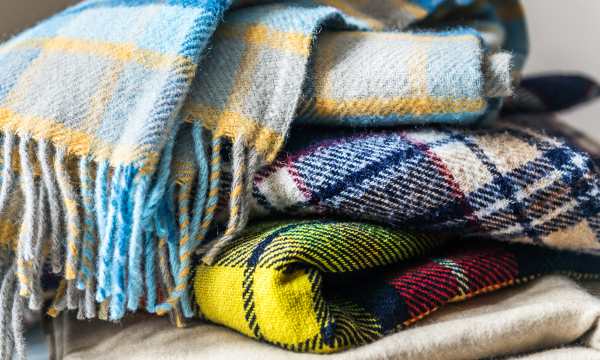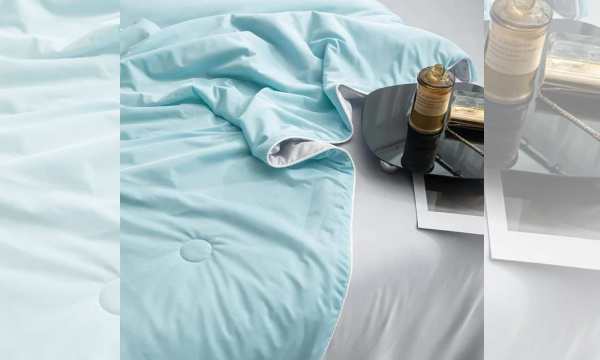Quick Fixes: Removing Blood Stains from Blankets
Blood stains on blankets are a common problem and can be difficult to solve. Whether it’s a minor accident, a nosebleed, or some other unexpected incident, you need to act quickly to prevent stains from hardening.
Ad
In this guide, we explore several quick and effective ways to remove blood stains from blankets. These solutions use common household items, so they are easy to use and don’t cause too much hassle.
1. Take Action Immediately:
Quick action is the key to removing blood stains. The longer it takes, the harder it will be to remove blood stains from fabrics. As soon as you notice a stain, wipe it off with a clean cloth or paper towel. Do not rub the stain as this will cause the stain to spread and penetrate deeper into the fabric.
Ad
2. Cold Water Soak:
If you want to get rid of a blood-stained blanket quickly and easily, just soak it in cold water. Put cold water in a sink or container and cover the injured area with cold water. Let the blanket soak for at least 15 to 30 minutes. Blood proteins also don’t stick to fabrics when you wash them in cold water, making stains easier to remove.
3. Hydrogen Peroxide Solution:
Hydrogen peroxide is a powerful stain remover that works well on blood stains. Add two parts cold water to one part hydrogen peroxide. Use a clean cloth or sponge to apply the solution to the blood stain. If you gently rub the stain, blood will begin to flow from it. Then wash the area with cold water.
Ad
4. Salt Paste:
Salt is a great way to absorb liquids and remove stains. Mix salt with cold water to form a thick paste. Apply the paste to the blood stains and wait twenty to thirty minutes. The presence of salt will cause blood to drain from the object. Then rinse the blanket with cold water and watch the stains disappear.
5. Baking Soda Magic:
Another common household item that is great for removing stains is baking soda. Mix baking soda with a little water to form a paste. Apply the paste to the blood stain with a soft brush or cloth and wipe gently. Let it sit for 15 to 20 minutes and then wash the blanket thoroughly.
6. Lemon Juice and Salt:
Lemon juice and salt are great for removing stains. Put salt on the blood stain and squeeze fresh lemon juice over it. Let the mixture stand for about 15 minutes. Then gently scrub the stain. Rinse the blanket under cold water to remove any remaining lemon juice and salt.
7. Enzyme-based Stain Removers:
Enzyme-based stain removers are used to break down organic stains, such as blood stains. Use it on the stain according to the directions on the bottle. Then leave the blanket for the recommended time and wash the blanket as usual. Cleaners containing enzymes are particularly effective on stubborn or stubborn stains.
8. Aspirin Solution:
For the aspirin solution, crush several aspirin tablets and mix with a small amount of water to form a paste. Wait 30 minutes after applying the paste to the blood stain. The salicylic acid in aspirin helps break down proteins in the blood. When the time is up, wash the blanket in cold water.
9. Meat Tenderizer:
Because it contains natural enzymes like papain, meat tenderizer can help remove blood stains. Mix the meat tenderizer with water to form a paste and rub it into the stain. Let it sit for 20 to 30 minutes and then wash the blanket thoroughly.
10. Note:
Always read the care label on the blanket for specific instructions and warnings before attempting to remove stains. Different cleaning products can damage certain fabrics, so it’s important to make sure the cleaning product you choose won’t damage them.
Conclusion
Dealing with blood stains on your blanket can be stressful, but if you implement the right quick fixes and act immediately, you can return your blanket to its original condition. Try these methods, depending on the material the blanket is made of and the severity of the stain. Remember, the most important thing is to act quickly and choose a method that works for your blanket.
FAQs
1. Can I wash the blanket in warm water to remove blood stains?
No, cold water removes blood stains better. It may be more difficult to remove stains from fabric if you use hot water. This is because proteins in the blood can clot.
2. How long should I let the cold water soak into the blanket?
Soak the bloodstained area for 15 to 30 minutes. This prevents blood proteins from sticking to the fabric, making the stain easier to remove.
3. Can hydrogen peroxide be used on all types of clothing?
Most fabrics can be treated with hydrogen peroxide, but read the care label on your blanket first. Do not use it on delicate or colored fabrics as they may change color.
4. Can I use table salt instead of kosher salt for the salt paste method?
Table salt can be used instead of kosher salt. It is important to create a thick paste that will draw the blood out of the fabric.
5. Will baking soda turn my blanket white?
In general, baking soda is safe on most fabrics and will not bleach. But it’s important to test a small, hidden spot first to make sure it will fit your blanket.
6. Can I use bottled lemon juice instead of fresh lemon juice?
Although fresh lemon juice is better, you can use bottled lemon juice instead. Beware of any additional ingredients in the juice that could damage the fabric.
 6 Easy Wool Blankets Cleaning Tips for Cozy Comfort
6 Easy Wool Blankets Cleaning Tips for Cozy Comfort
Wool blankets have always been a classic way to stay warm and cozy, but they require proper […]
More Revitalize Your Summer: Blanket Cleaning Guide
Revitalize Your Summer: Blanket Cleaning Guide
Now that summer is just around the corner, it’s time to get those warm blankets out of […]
More Non-toxic Blanket Cleaners for a Greener World
Non-toxic Blanket Cleaners for a Greener World
Blankets are an important part of the equation when it comes to keeping us warm, comfortable, and […]
More